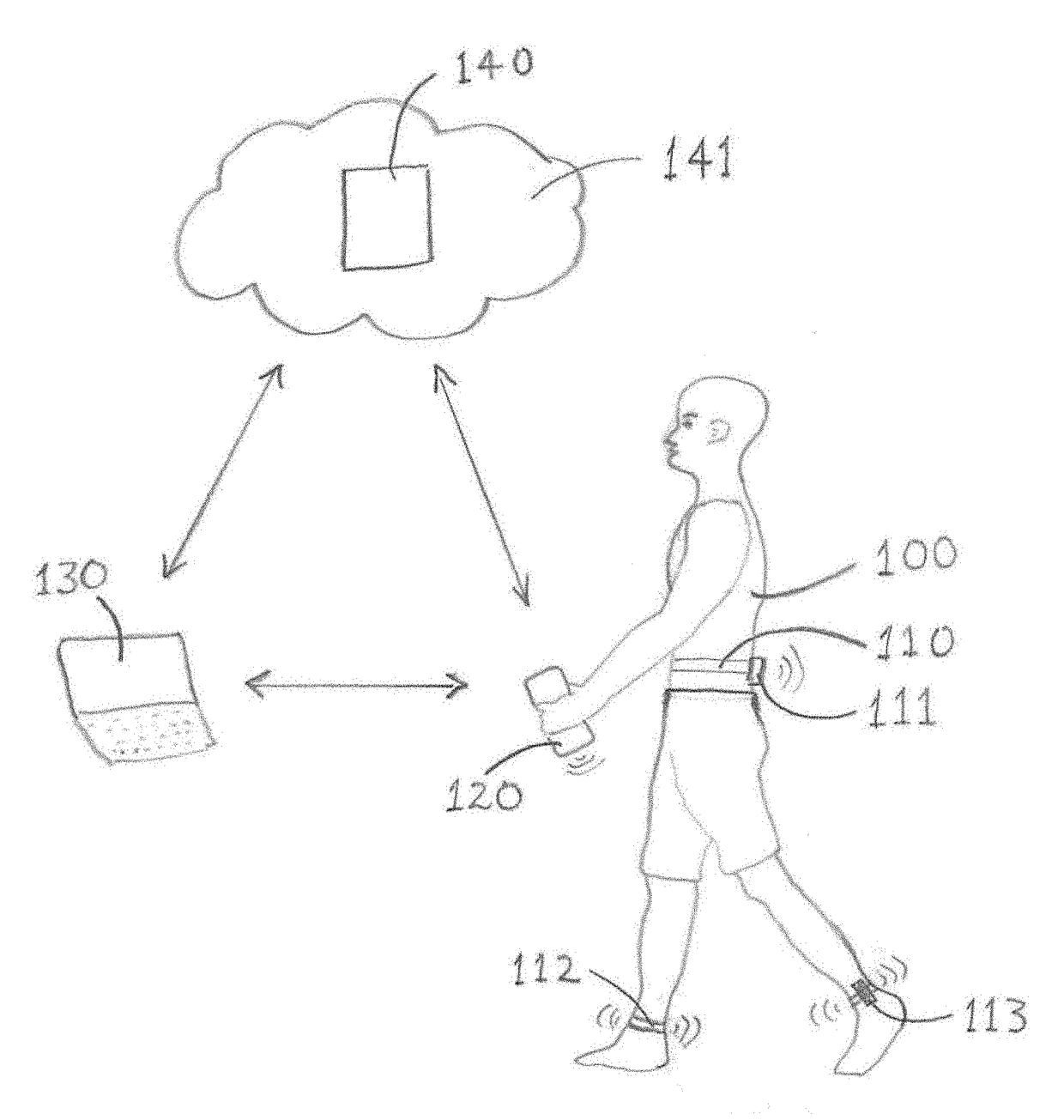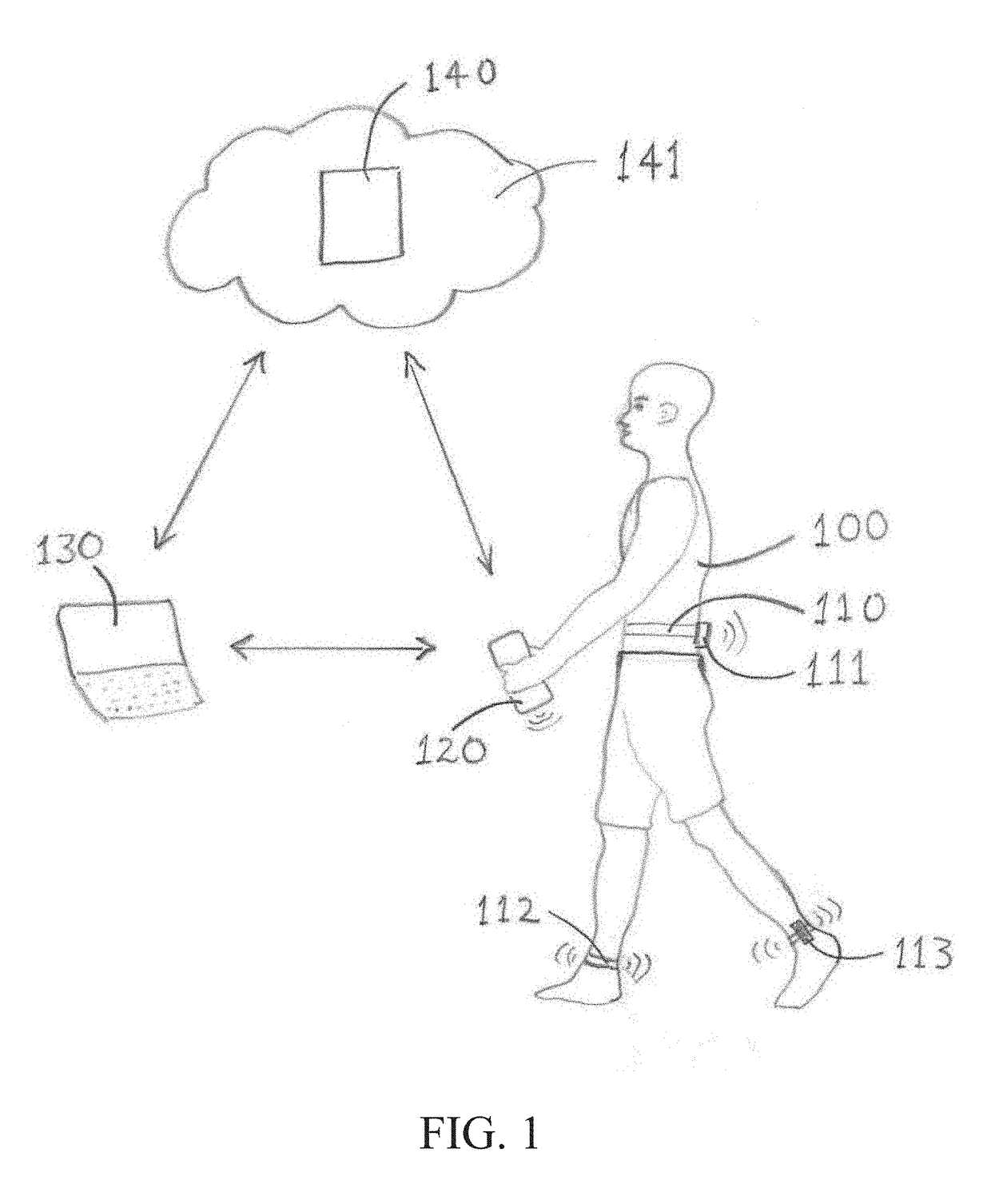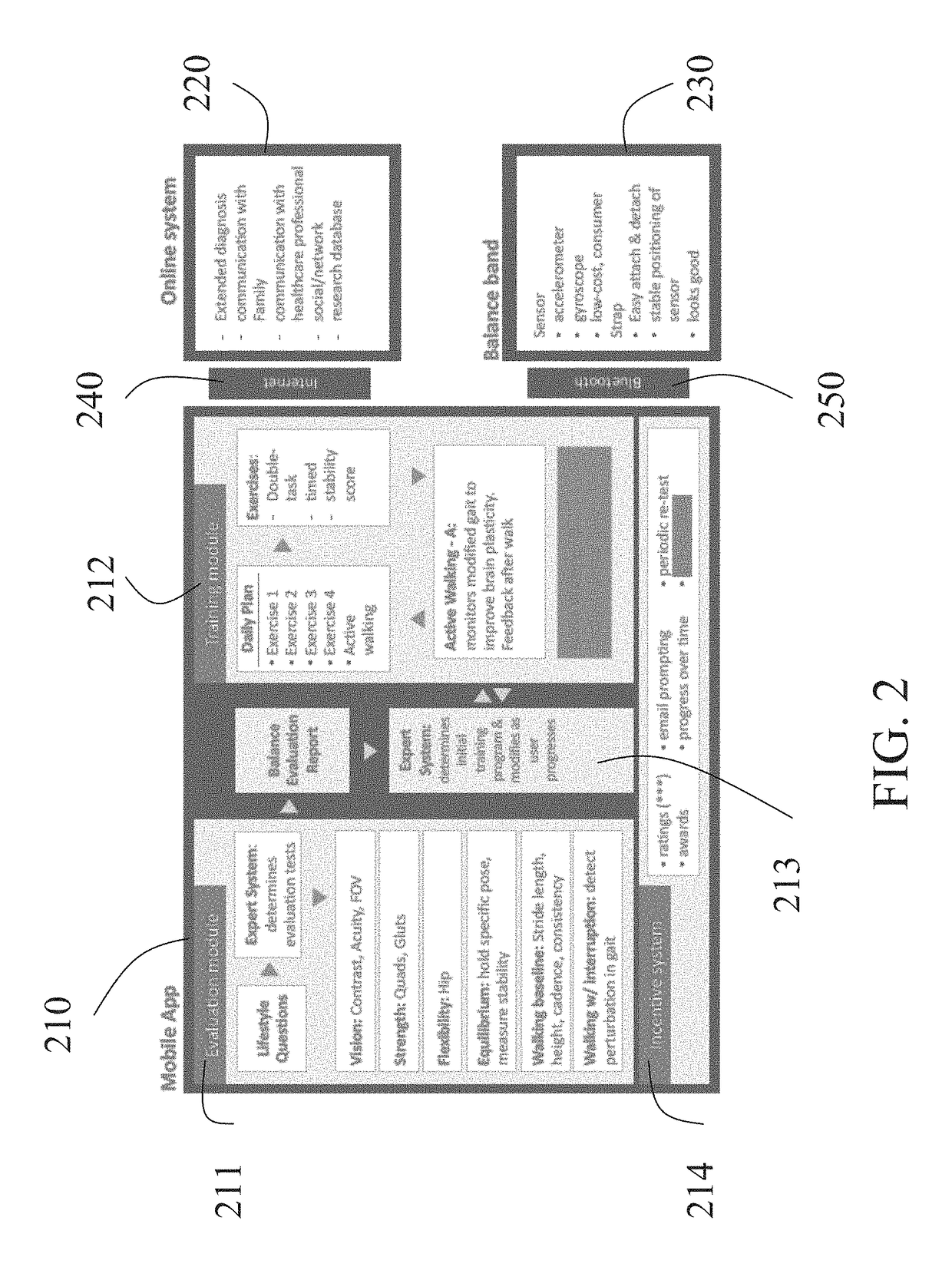Balance testing and training system and method
a training system and balance technology, applied in the field of human balance testing and training systems and methods, can solve the problems of shortening the life of people, further decline in health and loss of independence, and affecting the independence of peopl
- Summary
- Abstract
- Description
- Claims
- Application Information
AI Technical Summary
Benefits of technology
Problems solved by technology
Method used
Image
Examples
example 1
Basic Operation of the Evaluation Subsystem
[0050]The evaluation subsystem in embodiments may operate as follows:[0051]1. The person (human subject) provides some personal information to the app such as age, activity level, current feeling of balance.[0052]2. This information is used by the app (evaluation subsystem) to determine what balance stability evaluation test level to start with. For example, if the person is young and active, the first evaluation test might be to stand on one leg. If the person is quite elderly and not active, the first evaluation test might be to stand on 2 feet with the feet close together.[0053]3. The person stands in the assigned evaluation position for as long as they can, up to 20 seconds. The smartphone uses the internal accelerometers to measure stability. Sensor bands may also be used to measure stability.[0054]4. Based on the person's score, the app determines if they should be assigned a harder evaluation test, a simpler evaluation test, or if th...
example 2
Basic Operation of the Training Subsystem
[0061]The training subsystem in embodiments may operate as follows:[0062]1. The app uses all the data collected in the evaluation to determine the best training exercises for the person. A training schedule is established for 4 to 6 weeks. Training is intended to take place for 5 minutes each day.[0063]2. Each day, the app shows the training exercises to be done that day. As the person accomplishes each exercise, the app indicates the ones that are left. When they are all done, it shows that the day's training is completed. It also gives feedback on how well the exercises were accomplished.[0064]3. A typical training exercise would tell the person to take a particular stability position (e.g. feet tandem with eyes closed or on one foot with eyes open.) They are instructed to hold that position for a specified period of time. While they are holding the position, they also are asked to respond to a series of questions or puzzles or riddles. Thi...
example 3
Balance Evaluation and Training for an Elderly Person
[0069]Below is an example of what the evaluation test and training exercises might involve for an older person. Note this example is illustrative, not comprehensive.
Evaluation:
[0070]1. Stand with two feet close together, eyes closed, arms out straight. Hold this position for 20 seconds, while stability is being measured. If they do well, they go to #2.[0071]2. Stand with feet in “Tandem” position (heel to toe), eyes open, and arms out straight. Hold this position for 20 seconds while stability is being measured. If they do well, they go to #3.[0072]3. Stand on one foot with eyes open and arms out straight. Attempt to hold this position for 20 seconds while stability is being measured.[0073]4. Begin by sitting in a chair with no arms. Stand up and then sit down repeatedly, doing as many repetitions as possible within a 20 second window.[0074]5. Walk for 30 seconds. The system measures movement to calculate stride length, stride wid...
PUM
 Login to View More
Login to View More Abstract
Description
Claims
Application Information
 Login to View More
Login to View More - R&D
- Intellectual Property
- Life Sciences
- Materials
- Tech Scout
- Unparalleled Data Quality
- Higher Quality Content
- 60% Fewer Hallucinations
Browse by: Latest US Patents, China's latest patents, Technical Efficacy Thesaurus, Application Domain, Technology Topic, Popular Technical Reports.
© 2025 PatSnap. All rights reserved.Legal|Privacy policy|Modern Slavery Act Transparency Statement|Sitemap|About US| Contact US: help@patsnap.com



